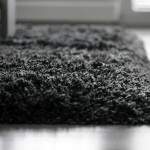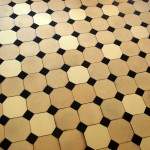Plan ahead and get your property into good shape before the cold weather begins.
Low temperatures, high winds and incessant rain can cause problems for the structure of your home and make minor issues worse. Take time now to look at all the outside areas of your home and make repairs before you hit trouble and need to get an emergency fix.
Check your roof
From ground level, look up for loose or missing roof tiles. Check for damage to chimney pots and make sure aerials are securely attached. Use binoculars to make a closer inspection, but don’t be tempted to climb onto the roof or hang out of a window – call a professional who has the correct equipment and knowledge to carry out a safe assessment and then make any necessary repairs. The National Federation of Roofing
Contractors keeps a directory of local registered contractors.
Make wall repairs
If sections of wall render are cracked or puffed out (known as ‘blown’), or if pointing is loose or missing, you need to put them right before water starts to penetrate and cause damage.
In the first instance, have any cracks checked by a professional to rule out structural issues. For safety, ask them to carry out any repairs that involve working at height.
You can repair smaller cracks yourself by removing any loose material, then filling them with an appropriate product, such as Polycell Exterior Polyfilla. If you have to repaint, use a good quality masonry paint – not only will it withstand all weathers, the colour will also staytrue. Overhaul windows Rotten window frames will only get worse through the winter and may start to let water in, which could spoil your decor.
Small sections of damaged wood can be chiselled out back to sound timber, then the hole filled with appropriate filler. Once it’s dry protect it by sanding it flat and repainting or varnishing using exterior products.
To extend the life of wooden windows, companies such as Ventrolla will repair sash windows, make good existing surrounds and fit draught excluders.
If your windows are in a very bad condition, or out of character with the house, now’s the time to replace them.
Keep draughts at bay
To stop cold air coming through the gap at the bottom of your front door, screw a draught excluder to the lower edge. A row of bristles will cover the air gap, but still allow the door to move freely.
For other draughts, simple methods are best. A strip of self-adhesive foam around door frames and window edges and a bristle letterbox draught excluder can make a world of difference.
Got a sticking door? Ask a carpenter to look it over – it may have slipped on its hinges and need rehanging.
Clean gutters
Clear out leaves and debris from easily accessible guttering and drains, so rainwater can flow away properly – trapped water can freeze and expand, causing damage in the process. A plastic or wire mesh, or a special Hedgehog gutter leaf-guard filter, will prevent future build-up.
First impressions count
Give your front door a once-over. Rub down tired paintwork and recoat, and replace old door furniture. If you’re buying a new letterbox, check that the bolts that go through the door are the same distance apart as the old one, then simply swap them over.
Wipe all woodwork, including window frames to remove dirt, and check everything is in perfect working order.
In the garden
A clean and tidy exterior looks smart, but will also reveal any maintenance issues that can be dealt with before they get worse.
Clear leaves and soil from paths, paving and decking to stop them getting slippery Clean decking with a stiff brush or, better still, a pressure washer to blast surface dirt away.
Inspect shed roofs to ensure there are no gaps or tears that could let water in.
Job sorted
When looking for tradesmen, ask friends or neighbours for recommendations, or try specific federations as well as online sites.
This could save you time and trouble.
“The cold and wet winter can put a huge strain on our homes. Filling any deep holes, hollows and cavities will help protect it. An expanding filler will create a long-lasting seal and insulate against heat, sound and moisture”, – Matt Gray, Polycell Decorating Expert.



















